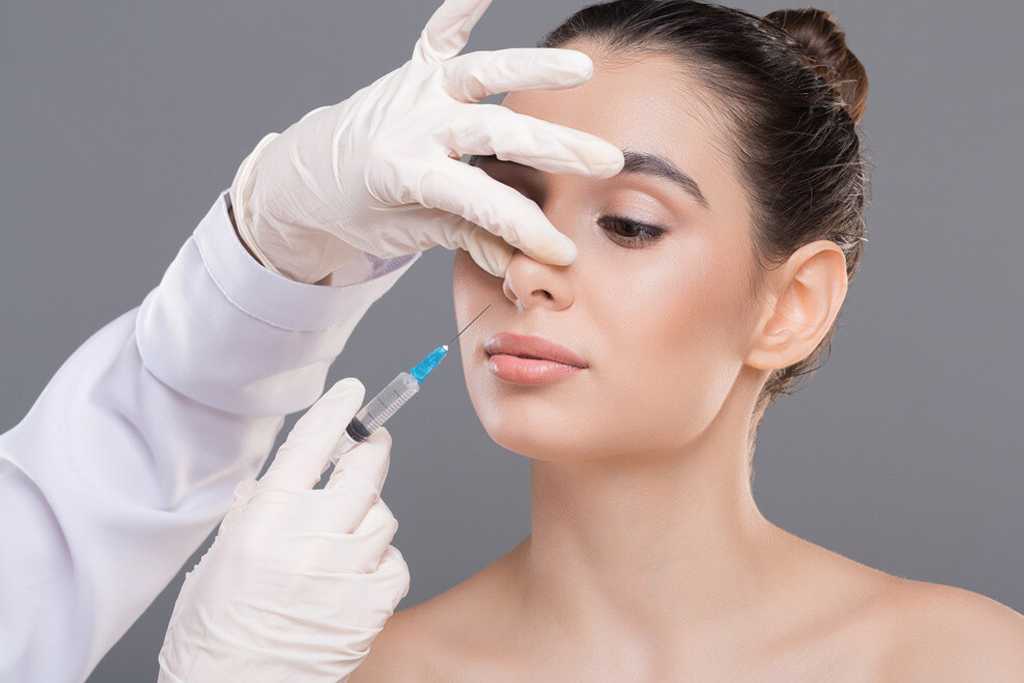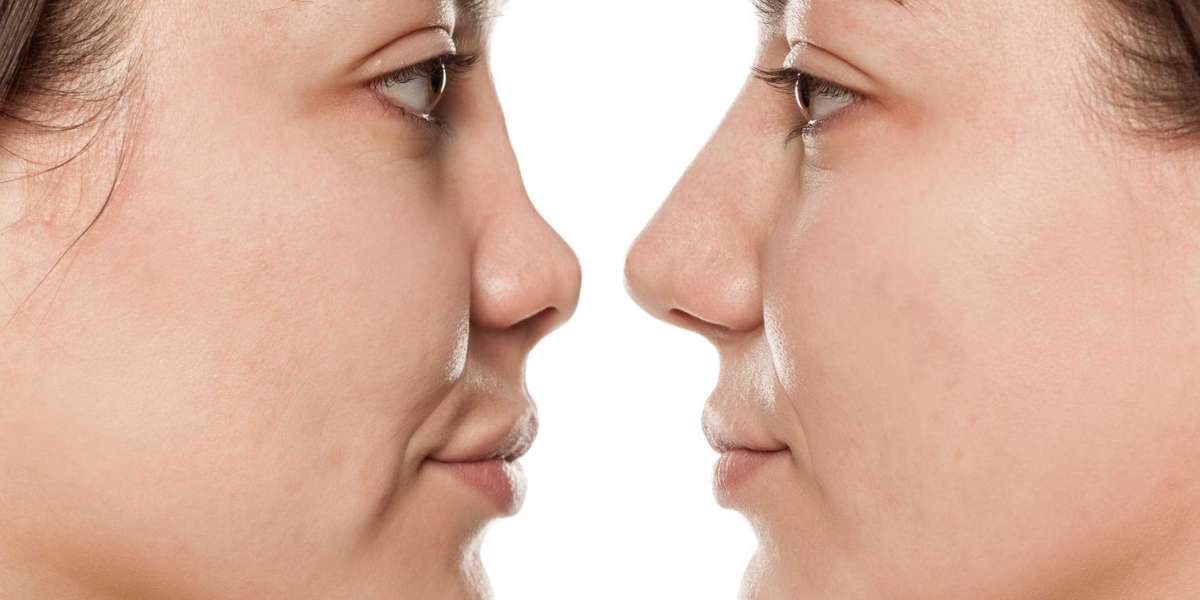Rhinoplasty in Dubai(تجميل الأنف في دبي) has become a highly sought-after procedure for both men and women seeking to enhance their facial features, rhinoplasty has gained significant attention due to the city's reputation as a hub for advanced medical treatments and high-end aesthetic procedures. Whether it's for enhancing the appearance, correcting structural issues, or improving breathing, rhinoplasty can have life-changing effects. However, like any surgery, there are inherent risks associated with the procedure. Understanding these risks and taking proactive steps to minimize them is crucial to achieving the desired outcome and ensuring safety.
In this article, we will explore the various ways you can minimize risks associated with rhinoplasty procedures in Dubai, from choosing the right surgeon to understanding the post-operative care required for a smooth recovery. If you're considering rhinoplasty in Dubai, it's important to approach the procedure with careful planning and knowledge to reduce potential complications.

Understanding Rhinoplasty Risks
Before delving into strategies for minimizing risks, it’s essential to understand the types of risks associated with rhinoplasty. While rhinoplasty is generally safe, complications can occur, as with any surgical procedure. Some of the common risks include:
Surgical Complications
- Infection: Like any surgery, there is always the risk of infection. While rare, it is a serious concern that can delay recovery or affect the results of the surgery.
- Bleeding: A small amount of bleeding is common, but excessive bleeding may require medical attention.
- Anesthesia Risks: Although rare, there are potential risks associated with anesthesia, including allergic reactions or adverse effects.
- Scarring: While rhinoplasty is designed to minimize visible scarring, some patients may experience noticeable scars inside the nostrils or around the incision areas.
Aesthetic Complications
- Unsatisfactory Results: One of the most significant concerns for patients undergoing rhinoplasty is the possibility of not achieving the desired aesthetic result. This may be due to technical errors or miscommunication between the surgeon and the patient.
- Nasal Obstruction: Sometimes, rhinoplasty can inadvertently affect the airflow through the nasal passages, leading to breathing difficulties.
- Changes Over Time: The nose may undergo subtle changes as it heals, and the final results may not be as expected.
Psychological Impact
- Emotional Distress: Rhinoplasty is not just about physical change—it can also have an emotional impact. Patients may feel disappointed with the results, leading to emotional distress or dissatisfaction.
Choosing the Right Surgeon for Your Rhinoplasty in Dubai
One of the most important steps in minimizing risks associated with rhinoplasty in Dubai is choosing the right surgeon. Your surgeon’s experience, qualifications, and reputation will directly impact your results and overall safety.
Look for Board-Certified Surgeons
Make sure your surgeon is board-certified in plastic surgery and has specific experience in performing rhinoplasty. In Dubai, look for surgeons who specialize in aesthetic or reconstructive rhinoplasty, as this expertise ensures they have the skills necessary for a successful procedure.
Research the Surgeon’s Portfolio
Review the surgeon's previous rhinoplasty results to get a sense of their style and skill level. Many top surgeons in Dubai will have an online portfolio showcasing before-and-after photos of past patients. This can give you realistic expectations about the potential outcome.
Consultations Are Key
Schedule multiple consultations with potential surgeons to discuss your concerns, expectations, and medical history. A thorough consultation allows the surgeon to assess your nose’s structure and determine if you are a suitable candidate for rhinoplasty. It also provides an opportunity to build rapport with the surgeon and assess their communication skills.
Ask the Right Questions
During your consultation, ask about the surgeon's experience with rhinoplasty, complication rates, and the specific techniques they use. Inquire about the potential risks involved, how they manage complications, and their approach to ensuring patient safety.
Minimizing Risks During the Rhinoplasty Procedure
Once you have chosen the right surgeon, the next step is ensuring that everything goes smoothly during the procedure itself. While many of the risks associated with rhinoplasty can’t be entirely avoided, they can be minimized with proper planning and technique.
Choose a Reputable Clinic
The clinic where the surgery takes place plays a significant role in minimizing risks. Ensure the clinic follows strict hygiene and safety protocols, and that the operating room is equipped with modern facilities. The clinic should also have an emergency response plan in place in case of unforeseen complications.
Follow Pre-Surgery Instructions
Your surgeon will provide specific instructions on what to do in the days leading up to your surgery. These may include:
- Avoiding Certain Medications: Some medications, such as blood thinners, can increase the risk of bleeding during surgery. It’s important to follow your surgeon’s advice on which medications to avoid before the procedure.
- Smoking Cessation: Smoking can impede the healing process, so it is advised to stop smoking at least a few weeks before surgery.
- Fasting Requirements: To minimize the risks associated with anesthesia, you will be required to fast for a certain period before the surgery.
Anesthesia Management
Rhinoplasty is usually performed under general anesthesia or local anesthesia with sedation. To minimize anesthesia risks, it is crucial that an experienced anesthesiologist administers the anesthesia and monitors your vitals during the procedure.
Post-Surgery Care and Recovery
Proper post-surgery care is essential to minimize the risks of complications and promote optimal healing. Your surgeon will provide detailed instructions on how to care for your nose after surgery.
Follow Post-Surgery Instructions Carefully
Ensure that you adhere to all post-surgery instructions, including:
- Managing Pain and Swelling: Swelling and bruising are common after rhinoplasty. Your surgeon may prescribe pain medication and recommend cold compresses to reduce swelling.
- Avoiding Physical Strain: It’s important to avoid activities that can put strain on the nose or cause trauma during the early stages of recovery. This includes strenuous exercise, bending over, or wearing glasses.
- Maintaining Follow-Up Appointments: Regular check-ups with your surgeon are crucial to ensure proper healing and to detect any potential issues early.
Protect Your Nose
During the recovery period, you should take extra care to avoid injury to your nose. This is particularly important during the first few weeks when the nose is still healing. You may be advised to wear a splint or avoid touching the nose directly.
Be Patient with the Healing Process
Rhinoplasty results take time to fully materialize. Swelling may persist for several weeks, and the final shape of the nose may take up to a year to fully settle. It’s essential to be patient and allow your body the time it needs to heal properly.
Common Rhinoplasty Risks in Dubai and How to Minimize Them
While rhinoplasty in Dubai is generally considered safe, there are some unique factors that could influence the risks involved. Dubai’s hot and humid climate, for example, can make recovery more challenging for some patients.
Skin Healing in Dubai’s Climate
High temperatures and humidity can affect the healing process, potentially leading to excessive swelling or irritation. To minimize these risks:
- Stay Indoors: Avoid prolonged sun exposure after surgery, and wear sunscreen if you must go outside.
- Hydrate Regularly: Drink plenty of water to stay hydrated, as dehydration can hinder the healing process.
- Use Gentle Skin Care Products: Use mild, non-irritating skincare products to avoid aggravating the skin around the nose.
Air Quality Considerations
Dubai is known for its dusty conditions, which can increase the risk of infection during the healing process. After rhinoplasty, it's essential to avoid environments with poor air quality. If possible, limit exposure to dust and pollutants to reduce the risk of complications.
Conclusion
Rhinoplasty in Dubai is a safe and effective way to achieve your desired nasal appearance, but like any surgical procedure, it carries certain risks. By choosing the right surgeon, following pre-surgery and post-surgery instructions, and taking precautions during your recovery, you can minimize these risks and ensure a successful outcome. If you're considering rhinoplasty in Dubai, take the time to carefully research your options and ensure that you are fully prepared for the procedure. By doing so, you'll be on your way to achieving the nose you've always wanted with minimal complications.














